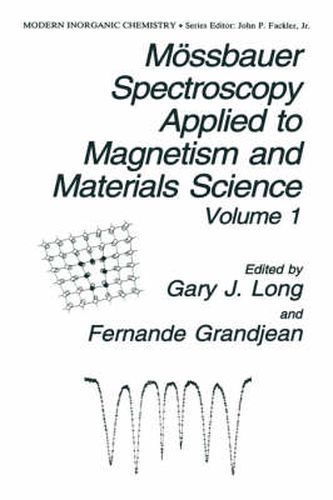Readings Newsletter
Become a Readings Member to make your shopping experience even easier.
Sign in or sign up for free!
You’re not far away from qualifying for FREE standard shipping within Australia
You’ve qualified for FREE standard shipping within Australia
The cart is loading…






This title is printed to order. This book may have been self-published. If so, we cannot guarantee the quality of the content. In the main most books will have gone through the editing process however some may not. We therefore suggest that you be aware of this before ordering this book. If in doubt check either the author or publisher’s details as we are unable to accept any returns unless they are faulty. Please contact us if you have any questions.
During the past 30 years materials science has developed into a full-fledged field for basic and applied scientific enquiry. Indeed, materials scientists have devoted their efforts to creating new materials with improved electronic, magnetic, thermal, mechanical, and optical properties. Often unnoticed, these new materials are rapidly invading our homes and automobiles, and may be found in our utensils, electronic equipment, textiles, home appliances, and electric motors. Even though they may go unnoticed, these new materials have either improved the efficiency and lifetime of these items or have reduced their weight or cost. In particular, magnetically ordered materials are useful in various applications, such as motors, magnetic imaging, magnetic recording, and magnetic levitation. Hence, much effort has been devoted to the development of better hard magnetic materials, magnetic thin films, and molecular magnets. During the same period of time, Mossbauer-effect spectroscopy has grown from a laboratory curiosity to a mature spectroscopic technique, a technique that probes solid-state materials at specific atomic sites and yields microscopic information on the magnetic and electronic properties of these materials. Iron-57 is the most commonly and easily used Mossbauer-effect isotope and, of course, is particularly relevant for the study of magnetic materials. Various applications of Mossbauer spectroscopy to magnetic materials are discussed in the first six chapters of this volume. Other isotopes such as zinc-67 and gadolinium-ISS have recently been used to study the electronic properties of zinc compounds and the electronic and magnetic properties of rare-earth transition metal compounds.
$9.00 standard shipping within Australia
FREE standard shipping within Australia for orders over $100.00
Express & International shipping calculated at checkout
This title is printed to order. This book may have been self-published. If so, we cannot guarantee the quality of the content. In the main most books will have gone through the editing process however some may not. We therefore suggest that you be aware of this before ordering this book. If in doubt check either the author or publisher’s details as we are unable to accept any returns unless they are faulty. Please contact us if you have any questions.
During the past 30 years materials science has developed into a full-fledged field for basic and applied scientific enquiry. Indeed, materials scientists have devoted their efforts to creating new materials with improved electronic, magnetic, thermal, mechanical, and optical properties. Often unnoticed, these new materials are rapidly invading our homes and automobiles, and may be found in our utensils, electronic equipment, textiles, home appliances, and electric motors. Even though they may go unnoticed, these new materials have either improved the efficiency and lifetime of these items or have reduced their weight or cost. In particular, magnetically ordered materials are useful in various applications, such as motors, magnetic imaging, magnetic recording, and magnetic levitation. Hence, much effort has been devoted to the development of better hard magnetic materials, magnetic thin films, and molecular magnets. During the same period of time, Mossbauer-effect spectroscopy has grown from a laboratory curiosity to a mature spectroscopic technique, a technique that probes solid-state materials at specific atomic sites and yields microscopic information on the magnetic and electronic properties of these materials. Iron-57 is the most commonly and easily used Mossbauer-effect isotope and, of course, is particularly relevant for the study of magnetic materials. Various applications of Mossbauer spectroscopy to magnetic materials are discussed in the first six chapters of this volume. Other isotopes such as zinc-67 and gadolinium-ISS have recently been used to study the electronic properties of zinc compounds and the electronic and magnetic properties of rare-earth transition metal compounds.